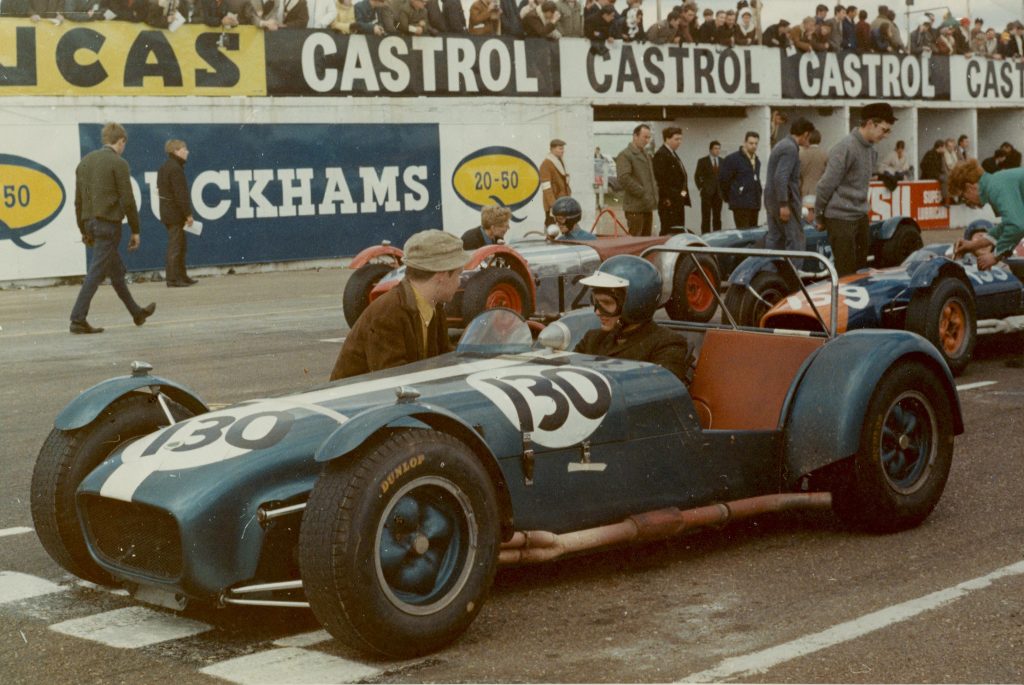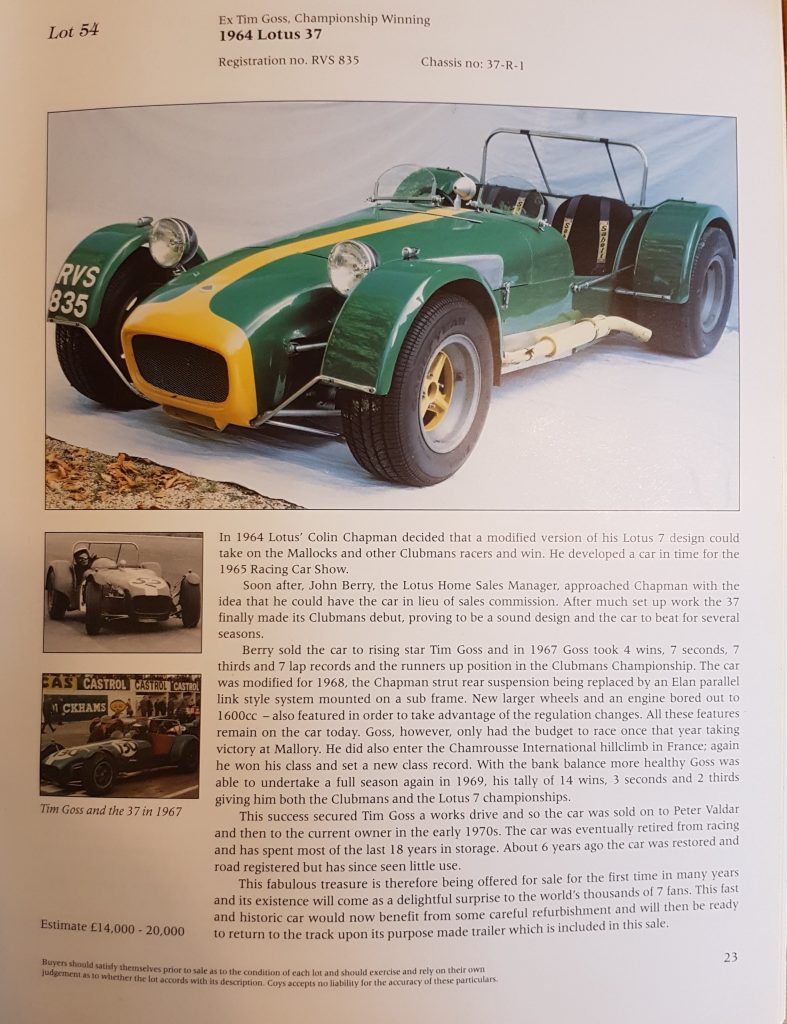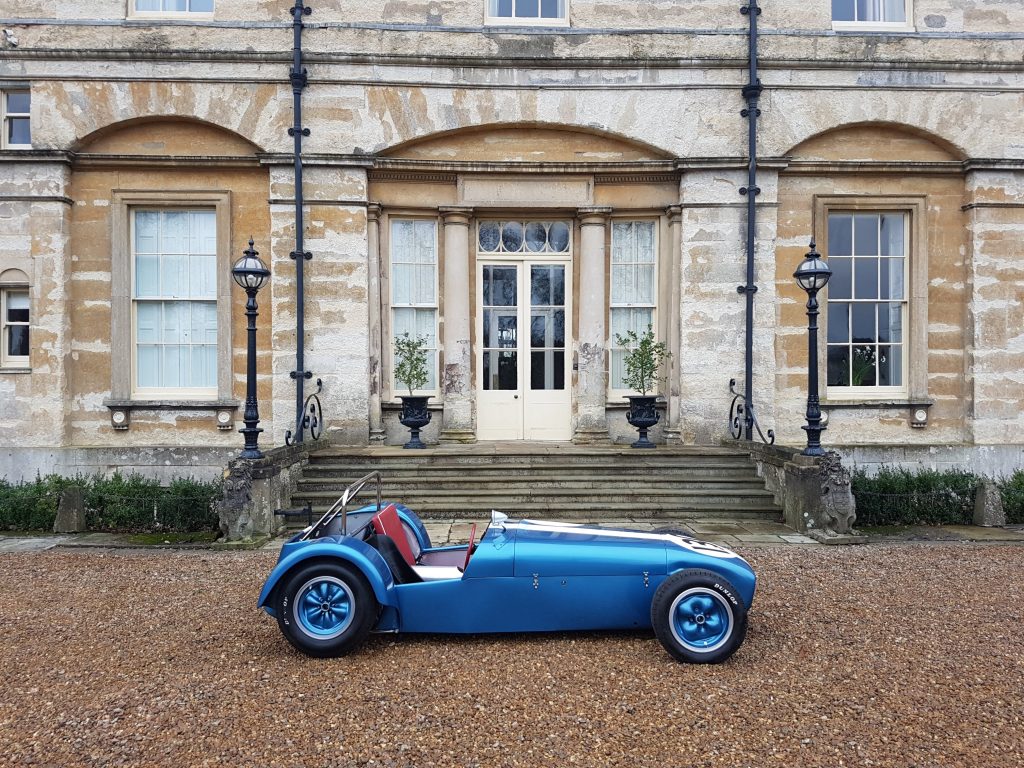Despite Colin Chapmans’ ambition of the sixties to conquer the Clubmans Formula with a series of Lotus 37’s, in the end he chose to build only one. Apart from a number of formula cars, hardly any regular Lotus type is unique. This fact makes the 37 instantly ‘special’. Why was only one Three-7, or 3/7, as it was also named, ever built? Was it any good? And if only one 37 has been built, did it survive all these years and if so, where is it now?

The origin of designing and building the 37 dates from the early 60s. Since the late 50s, Sevens have been raced quite a lot. And although this often led to good results, the ‘racing 7s’ needed improvements. Especially the rigid rear axle that was used for the rear suspension caused inadequate handling. This was recognized by Lotus, so Lotus engineers Hugh Haskell and Don Gadd developed a version of the Seven with independent rear suspension with a diff that was developed by Lotus for the Eleven (the four successors received an Elite differential by the way). In addition, the front suspension was improved, the chassis taken from a series 1 Seven was reinforced and a Ford 105E engine, tuned by Cosworth, was built in.This Lotus didn’t receive an official type number but was raced with in 1962. It was nicknamed ‘Lotus 7½’. The plan succeeded, the Lotus 7½ was very fast indeed and in 1962 and 1963 it was successful in the races it entered. It was in this car that Colin Chapman raced one of his last ‘real’ races: the Silverstone Six Hours Relay Race of 1962.

Because of the success of the 7½, Lotus got the taste for more so the development of the new Lotus started and it was taken into production. They connected a type number to this one: Type 37, or, as mentioned earlier, the Lotus Three-7. It was decided to develop the Three-7 mainly for the Clubmans Formula. This race series was introduced in 1964 because of the need for a race series for lighter, simpler race cars in addition to the sports cars competition. In that competition the 7s and similar race cars could not compete with the bigger, mid-engined race cars. To enter the Clubmans Formula, the race car should be an open two-seater with open wheels. It should be powered by a Ford engine. In 1964 several 7s were entered quite successfully, but not so often they succeeded in beating the Mallock U2s. Maybe it was another competition, a competition between Arthur Mallock and Colin Chapman, which was the incentive for Chapman to develop a winner.

Peter Warr, at the time head of Lotus Components was commissioned to develop that winner. The first Three-7 got chassis number 37-R-1 and had an advanced design. First of all a Series 2 Seven chassis was used to build the race car. The most fascinating part of this Lotus was the further developed independent suspension (five-link) of the Elite and the differential that was also used in Formula Junior Lotus’. A double wishbone with separate anti roll bar was used as front suspension. Braking force was obtained from four discs, two of which were inboard.
Lotus had already developed, with great success, the ‘wobbly web’ wheels in the previous years in the never-ending search to add lightness. These magnesium and aluminum wheels were used by Lotus for various single seaters – including of course the famous Formula 1’s – and frequently copied by other teams because the ‘wobbly’ shape, required for strength, unintentionally provided extra brake cooling. These wobbly webs were also mounted on the 37. It was powered by a dry-sumped 1499 cc Cosworth-Ford 116E engine. With 120 HP and a weight of just over 500 kg the power to weight ratio was considerable.

This Lotus was built for a niche market, it was necessary to set up a marketing plan. So the 37 was presented at the 1965 Racing Car Show in the Horticultural Halls in London. Positive reactions were received and several race car drivers were interested in this racy 7. But things took a turn. The Lotus board knew that the price tag was killing the game. Completely built, the 37 was priced at £1,450 – twice as much as a Super Seven and converted to 2019 about £70,000 – while a Mallock U2 was priced at about £1,000. The demand for the Elan and the Lotus Cortina was increasing which was more profitable for Lotus than starting up the production of a new model for a limited target group at too high a price. And thus, the prototype race car which was presented at the Racing Car Show, with all good intentions but without having raced at all, was born as a unique Lotus. The Three-7 ended up somewhere at Lotus Components and would probably have been disassembled and reused again if John Berry, the Home Sales Manager of Lotus, had not asked if he could race the Three-7. Chapman gave permission and this led to the second life of the 37.

In theory the design of this race car was spot on, but of course it took some work to fix the set-up. Once that was done, the Three-7 was successful in the 1965 and 1966 Clubmans Formula which it was designed and built for. In 1967, the young, talented Tim Goss bought the car for £1,025 from Peter Deal, who had bought the 37 from John Berry. By then the 37 was sprayed in Shelby metallic blue along with a white stripe in the middle (the original color of the 37, as it left Lotus Components, is red). Tim Goss achieved many podium finishes in 1967 in this color scheme, including four victories, and he also broke seven lap records.
Racing season 1968 was mainly used to improve the 37. After all, the car had been on track for a number of years now and needed further development. Jim Donnelly (Silvertune Engineering) was responsible for the works. The cylinders were bored out to 1600 cc and the front suspension was replaced by the parallel double wishbones of the Elan. Most significant was the replacement of the ‘Chapman strut’ rear suspension by a much better double wishbone construction with wider wheels (Tim got “slightly fed up with the rear suspension always falling apart”…). As a result only a few races were done that year, but still Tim won at Mallory Park and besides that he entered the 37 for the famous hill climb of Chamrousse in France where he won his class. All these improvements and investments of 1968 led to 14 wins (of 19 races) and two championships in 1969, while racing against some top names, including the illustrious Max Mosley in his Mallock. It was the last year in which Tim Goss owned the 37. So after all, the goal set by Colin Chapman, defeating Ray Mallock’s U2 with the 37, was successfully completed.

This could be the happy end of this story. But, it isn’t. Because, a unique Lotus is … quite unique. That fact requires more research. After all, the most important question is still unanswered: did the 37 survive after 1969 and if so, where is it now? After Tim Goss won the championship in 1969, he sold the 37 to Peter Valdar. Peter wanted to repeat Tim’s success, but the other competitors had done their homework well. The Clubmans Formula had become semi-professional by this time and the 37 could no longer match the top of the starting grid of 1970. Tim Goss sold the 37 at the right time and secured a drive in another winner with which he took the championship again: the Lotus 7X, a works racecar, of course based on the Seven. Peter Valdar sold the 37 to Ashley Devonshire because of the disappointing results and after that the Three-7 then was left for dead in a shed for thirty years. It only came out once to undergo some modifications – amongst others the engine, which had been moved forward during one of the many modifications, was placed in its original position – and to be registered for public road.

The 37 had been modified and changed so often over the years that it hardly looked like the original. Bringing it back to its original state would actually mean that the car should be rebuilt almost completely. Nevertheless, Ashley decided to auction the 37 in 2001 and this led to an unexpected spectacle. The Lotus was now sprayed in British Racing Green with the inevitable yellow line – like when John Berry raced the car. Unfortunately, the chosen color green really doesn’t look like BRG, but that didn’t stop the bidders from going crazy. Tim Goss, who still had very fond memories of the 37 and wanted to buy the car back, did his share of bidding, but stopped at about £25,000. The experts had estimated the 37 at £15,000 to £20,000, but the auctioneer hammered it at £49,000 … the new owner had just paid, along with the auction fees, about £55,000 for this Lotus. Converted to 2019, this equals about £90,000 which certainly was and is special for a Lotus.
After 2001 the Three-7 disappeared from the radar. The new owner, who was thought to be from Belgium, wanted to remain anonymous. And he has succeeded to this day. Literally only a handful of people within the Lotus community – among whom Bends and Curves Road Tripping – know the owner and the whereabouts of this unique Lotus.
Still, this is not the end of this story. Because the Lotus 37 cannot be separated from its former driver and owner Tim Goss. Since 2012 Miles Renton-Skinner of Ashley & James Classic & Vintage Bodywork specialists has been working on a recreation of the Lotus 37. This recreation is not finished yet, but near enough to revive the 37 as it was bought in 1967 by Tim.

‘7’ is a common thread in Tim Goss’ life. Stimulated by his parents to pursue his dreams, he came into contact with motorsport at a young age and immediately, after obtaining his driving license, he laid the foundation for his successes on the track. In an old Austin 7, oversteer and ‘full opposite lock’ were practiced, until the old Austin tipped over with its backside into a tree. This meant exit Austin but not exit 7. Tim’s brother Stephen bought a Lotus Seven S2 kit in 1963 and after it was built the means were present to get serious about racing. Stephen lent the Seven to Tim with which he raced his first race. In 1965 Tim moved to France, accompanied by a recently purchased Mini, to study French. Racing was done in spare time, he entered himself and the Mini in a hillclimb and several rallies. Dutchman Jan Thoenes was his co-driver for some time in various rallies. In 1967 Tim Goss returned to England as an aunt had left him a sum of money after she had died. Stephen told Tim that a special Lotus was put up for sale, a Lotus based on the Seven that had been built and tuned especially for the Clubman Formula. Enter Lotus Three-7. The rest, as they say, is history.
Without the help of John Watson (from the Historic Lotus Register, the British Lotus Seven Club and also Joint Seven Registrar and ‘Lotus historian’), Arno Huberts, Jan-Bart Broertjes (editor of Lotus Letters) and especially Tim Goss (driver, ex-owner of the Lotus 37) and Miles Renton-Skinner of Ashley & James Classic & vintage bodywork specialists, this story would not have been told. Besides their cooperation I also used the article that Tim wrote earlier for Lowflying magazine, the fabulous British Lotus Seven club club-magazine.

One response
[…] a post about the Lotus 3/7 was added to this website. That story is mainly about British race car driver Tim Goss and the […]